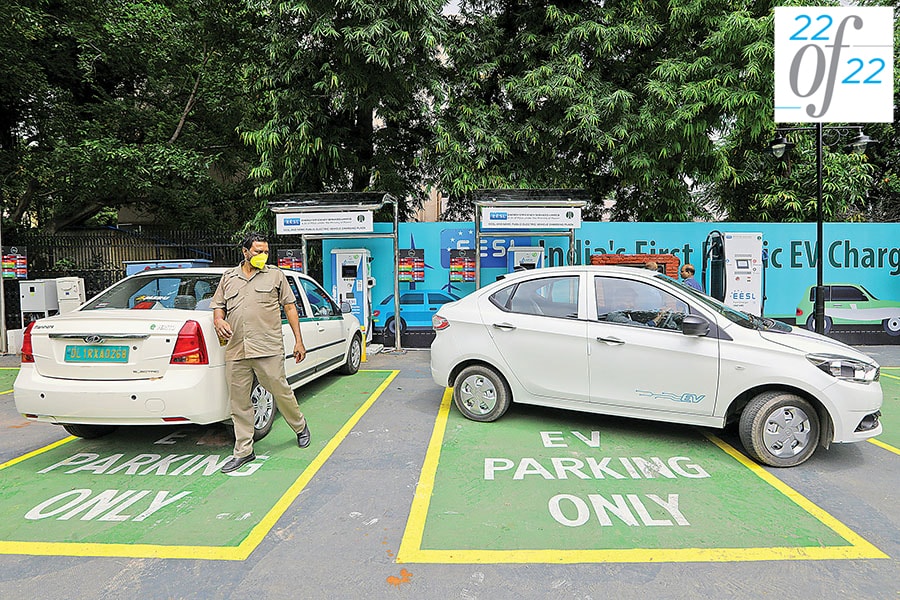
EVs are all the rage. Will the charging infrastructure catch up in 2023?
From incumbents to startups, the electric vehicle sector saw phenomenal growth in 2022. Will 2023 see the supporting infrastructure gain pace?
 India currently has only 1,742 EV charging stations, a number that is expected to increase to 100,000 by 2027. The country requires around 20.5 lakh units by 2030. Charging stations are key for EV adoption as range anxiety is one of the key hindrances
Image: T. Narayan / Bloomberg Via Getty Images
India currently has only 1,742 EV charging stations, a number that is expected to increase to 100,000 by 2027. The country requires around 20.5 lakh units by 2030. Charging stations are key for EV adoption as range anxiety is one of the key hindrances
Image: T. Narayan / Bloomberg Via Getty Images
The year 2022 was a fascinating one for the country’s electric vehicle ecosystem. From about 20,000 electric vehicles being registered in 2018, India’s electric vehicle sales have already zoomed to nearly 300,000 units between April and September, a number that’s only expected to grow further by the end of the fiscal. In October alone, as many as 1,11,971 units were sold in the country, a 185 percent year-on-year growth signalling a record year for electric vehicles in the country.
From incumbents to startups, the sector has lately seen phenomenal traction, thanks partly also to the Indian government’s push to have more electric vehicles on the road by 2030, in addition to wider awareness and cost parity. The EV sector penetration in the country currently stands at around one percent and the Indian government wants to push for a sales penetration of 30 percent for EVs in the private car market, with an even greater ambition of 70 percent for commercial vehicles and 80 percent for two- and three-wheelers by 2030.
Rising fuel prices have also played into the wider adoption of electric vehicles. India’s import of crude oil required for vehicular fuel has been increasing over the years and stood at $40 billion in 2017. That number is projected to more than double to $90 billion by 2030 at the current pace. At the same time, battery cost has reduced from $800 per kilowatt-hour in 2011 to $137 per kilowatt-hour in 2020.
At the centre of that revolution, however, will be the growing need to set up charging infrastructure in the country. “Taking into account the current growth trend, it is estimated that there will be 5 crore EVs on Indian roads by 2030,” Gurugram-based market research firm JMK Research said in a recent report. “E-two wheelers alone will account for 70 percent of total EV sales by then on the back of availability of suitable charging options–both home and battery swap; prices of EVs achieving parity with that of ICEs; and their promising use in delivery services as well.”
That means a growing need to quickly ramp up electric charging infrastructure, especially considering that range anxiety continues to be one of the foremost hindrances to EV adoption. India currently has only 1,742 charging stations, a number that is expected to increase to 100,000 units by 2027. India requires some 20.5 lakh stations by 2030.








